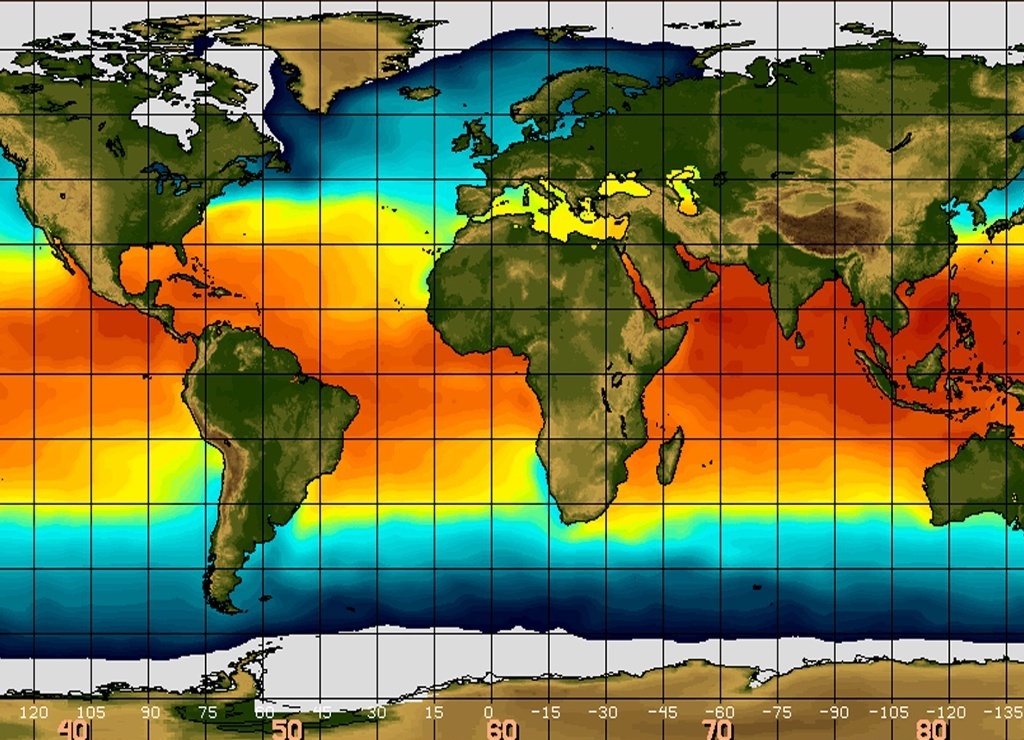Climate Change Impacts: Uttarakhand breaks rainfall and heat records
Uttarakhand has witnessed extreme weather conditions over the last two months. While June witnessed record-breaking maximum temperatures, July has been witnessing spells of extremely heavy Monsoon rains triggering flash floods and landslides.
By Editorial Team / Jul 11, 2024

Har Ki Doon Valley | Photo by Ranjeet Kumar Singh
Uttarakhand has witnessed extreme weather conditions over the last two months. While June witnessed record-breaking maximum temperatures, July has been witnessing spells of extremely heavy Monsoon rains triggering flash floods and landslides.
So far in the Monsoon season from June 1-July 10, the cumulative rainfall for Uttarakhand is 328.6 mm against the normal of 295.4 mm, resulting in an 11% surplus.
According to scientists, these extreme weather conditions can be attributed to climate change. Humidity is the prime factor behind the increasing likelihood of heavier rainfall and even more dangerous heat waves. Both humidity and temperature are the twin pillars of climate change.
July: Extremely heavy rainfall
July began on a rainy note and as of July 10, the Himalayan state has already witnessed double the normal average rainfall it receives. From July 1-10, Uttarakhand has recorded 239.1 mm of rain in comparison to its normal average of 118.6 mm. With this, the state has a rain surplus of 102%.
At present, all 13 districts of the state are rainfall surplus in July, pushing the Himalayan state towards surplus rainfall from the deficit in June. The normal average rainfall for Uttarakhand for July stands at 417.8 mm.
Bageshwar district recorded the highest rainfall to the tune of 357.2 mm against the normal of 77.7 mm, leading to a rain surplus of 360% between July 1-9. This is followed by Udham Singh Nagar and Champawat districts, which recorded rainfall surplus of 280% and 272%, respectively during the same time period. Following is the district-wise rainfall recorded from July 1 to July 10.
The atmosphere, land, and oceans are all warming at a faster rate. The warmer it becomes, the more moisture the atmosphere can hold. This has led to more evaporation of water from the Earth’s surface. The increased holding capacity of the air, then results in more droplets and heavier rainfall, sometimes in a shorter space of time and over a smaller area.
“Rainfall in Uttarakhand has been the result of the alignment of several Monsoon weather systems. There was Western disturbance over North Pakistan and its adjoining areas, a trough was extending from Central Pakistan to Uttarakhand and easterly winds from the Bay of Bengal were feeding moisture over Uttarakhand. All these resulted in intense clouding and subsequent heavy rainfall. However, the extreme heavy rainy spells are a result of climate change. There has been an increase in the moisture in the atmosphere due to the rise in global average temperature. This leads to formation of intense clouds, triggering heavy rains. With temperatures rising constantly, these spells of intense rain would be more common,” said Mahesh Palawat, VP- Meteorology and Climate Change, Skymet Weather.
There has been an increase in the average relative humidity across India because of the rapid rise in land and sea temperatures. According to the Clausius-Clapeyron equation, the air can generally hold around 7% more moisture for every 1-℃ temperature rise. Therefore, for relative humidity to stay the same under 1degreeC of warming, the moisture content in the air also needs to increase by 7%. In theory, if there are no limiting factors, then this is the rate of increase we expect.
June: Extreme Heat
2024 came as a surprise to meteorologists and scientists as day temperatures above 40 ℃ were recorded on several days in a Himalayan state. Climate change-influenced weather extremes over the hilly region have been posing numerous environmental challenges, and threatening livelihoods.
The Summer of 2024 was a punishing one, with severe heat waves gripping almost all districts of Uttarakhand. In June, mercury in Dehradun crossed the 40-℃ mark for 11 consecutive days from June 9-20. Meanwhile, in May, temperature in the city soared above 40 degrees on eight days.
On at least five occasions in May, the hill station of Mukteshwar recorded temperatures of nearly 30 degrees Celsius, the threshold of a heatwave in the hilly terrain. June has been the harshest for the town as it saw maximum temperature settling above 30 degrees for 10 days. On June 15, Mukteshwar recorded a maximum temperature of 32.2℃, the highest in 10 years. This was close to the all-time high record of 32.5℃ which was observed on June 16, 2012.
Pantnagar also broke its 10-year record, with a day maximum of 41.8℃ on June 19. It has recorded 10 consecutive days of above 40℃ temperatures from June 11-20. From the very beginning of May, temperatures in the city settled in the late 30s, but the last 4 days saw mercury surpassing 40℃.
According to meteorologists, the steep rise in temperatures could be attributed to prolonged dry spells and less precipitation. Pre-monsoon rainfall activities remained almost absent and erratic.
"Waxing and waning of rains is normal but in the absence of these activities, climate change plays a key role. Prolonged dry periods during May and June led to a rise in mercury. Global warming has been impacting the weather patterns making heatwaves intense and rain patterns erratic. May is the peak summer month and June brings in relief. However, 2024 has seen temperatures soaring in June, even settling beyond 40 degrees for days together. The impact of receding El Nino has further worsened the situation, which aided further warming. This shows how global warming is impacting the weather. If global average temperatures continue to rise, this would become more frequent as well as intense,” said Palawat.
According to the state-run Indian Meteorological Department, a hilly region experiences heatwave when the maximum temperature is over 30℃, with 4.5 ℃ above normal for two consecutive days.
The temperature rise in Uttrakhand generally occurs in March, and the maximum temperature is observed from May to mid-June. During this time of the year, the mean maximum temperature in the southern Uttarakhand region ranges between 34 °C to 38 °C, and the mean minimum remains at 20 °C to 24 °C.
According to a report “Evaluation of Observed and Future Climate Change Projection for Uttarakhand, India”, the maximum temperature may likely increase from 0.42 °C to 3.07 °C from MC (Middle of Century) to EC (End of Century) in the RCP (Representative Concentration Pathways) 4.5 and from 0.83 °C to 5.49 °C in the RCP 8.5. In addition, the minimum temperature may increase from 0.80 °C to 3.25 °C from MC to EC in the RCP 4.5 and from 0.30 °C to 5.86 °C from MC to EC in the RCP 8.5.
It is observed that the annual average maximum and minimum temperatures may likely increase for Uttarakhand by more than 5 °C. Notably, a decrease in the pre-monsoon precipitation at EC and a higher increase in the maximum temperature during the monsoon season are observed. An increase in the maximum temperatures along with precipitation may lead to a rise in the frequency of the monsoon season’s extreme rainfall events.
The very high maximum temperature during summer days makes the area vulnerable to frequent forest fires. According to a report, over the hilly region of Uttarakhand, the number of very warm days/nights is increasing, whereas the number of extremely cold days/nights is dropping. The Uttarakhand Himalayas have witnessed an increase in weather extremes over the past four decades.
Forest Fires
In Uttarakhand, the peak fire season typically begins in late March and lasts around 11 weeks. There were 247 VIIRS (Visible Infrared Imaging Radiometer Suite) fire alerts reported between 1st of January 2024 and 3rd of June 2024 considering high confidence alerts only. This is normal compared to previous years going back to 2012.
"There is a direct relation between extreme heat and forest fires. While we do not deny the fact that forest fires are often man-made, what we saw this year gave us a clear picture of how rising temperatures will exacerbate the situation. Extended dry period paved the way for rise in temperature as well as accumulation of dry leaves. All these factors led to faster dissemination of fire, covering larger areas and resulting in tree cover loss. Putting measures in places well in time can help in saving the forest fires but definitely we need to curb greenhouse gas emissions," said Rajnish Ranjan, Disaster Management Expert.
From 2001 to 2023, Uttarakhand lost 1.18 kha of tree cover from fires and 19.5 kha from all other drivers of tree cover loss. The year with the most tree cover loss due to fires during this period was 2009 with 217 ha lost — 23% of all tree cover loss for that year.
According to the data from Global Forest Watch, Nainital had the highest rate of tree cover loss from 2001 to 2023 due to fires with an average of 12 ha lost per year.
Data Source: Global Forest Watch
In Uttarakhand, the warming temperature trend is worsening forest fire events to a greater extent. Human-caused climate change is influencing weather and climatic extremes in higher elevation places, and many recent studies have reported on the increasingly prevalent elevation-dependent warming (EDW). EDW influences the Himalayan rivers and glaciers (e.g., changes in the glacial mass balance, river discharge, snowfall, etc.), which is the only water source for the hilly region’s livelihood.
Uttarakhand Extreme Weather Forest Fires

